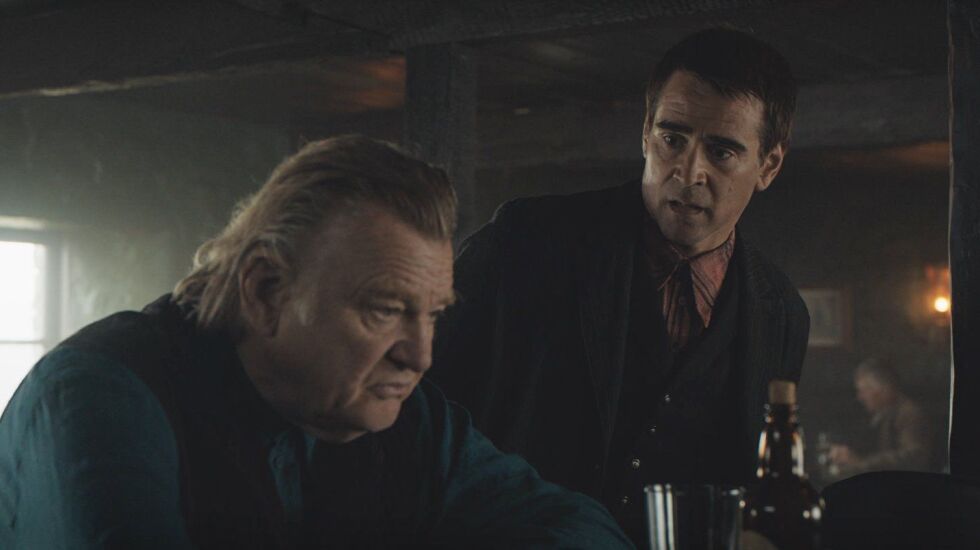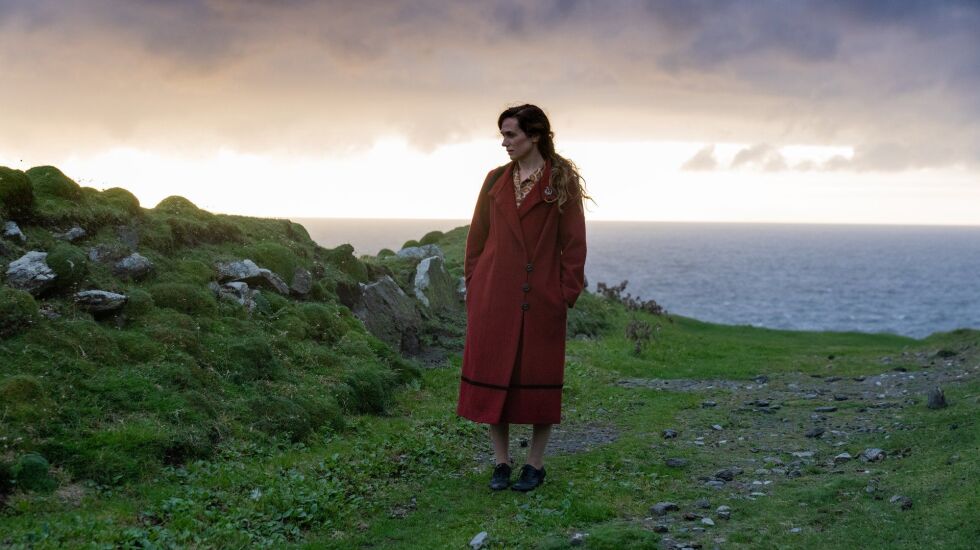
“I just don’t have a place for dullness in my life anymore.”
“You live on an island off the coast of Ireland — what the hell are ya hopin’ for?” –Exchange between two weary locals in “The Banshees of Inisherin.”
An air of melancholy hangs over the entire (fictional) title island in “The Banshees of Inisherin,” a brooding and eccentric and darkly funny comedy/drama from the majestically creative Martin McDonagh, who reunites his “In Bruges” stars Brendan Gleeson and Colin Farrell a decade and a half after they teamed up in that 2007 minor classic about a couple of hitmen caught up in surreal circumstances.
In “Banshees,” Gleeson and Farrell once again are pure movie magic together, with Gleeson’s gruff and rugged and imposing persona the perfect counterpart to Farrell’s handsome and wide-eyed transparency, which at times borders on the, well, the not-too-bright. Earnest, but not too bright.
“The Banshees of Inisherin” is set in 1923 on a remote island off the west coast of Ireland, with a choppy and unwelcoming body of water separating Inisherin from the mainland, which is in the final throes of the Irish Civil War. The fighting is so close the locals can see and hear the gunfire across the way, and yet there’s the typical Irish air of “Eh, what can you do?” as they go about their daily business, resigned that even after the fighting stops, it’ll no doubt start up again. (At one point, a local cop says he’s been called to the mainland to help with a security situation, because “the [Irish] Free State lads are executing a couple of the IRA lads, or is it the other way around?”)
There’s a lush but chilly postcard gorgeousness to the island, where Farrell’s Pádraic lives in a small farmhouse with his sister Siobhán (Kerry Condon, “Better Call Saul”), who spends her days cooking porridge and keeping the home clean and reading while Pádraic tends to their small herd of cattle and keeps on inviting his beloved albeit stinky miniature donkey Jenny into the house, much to Siobhán’s frustration. Animals are for outside, she tells Pádraic, but in fairness, Jenny is about the most lovable miniature donkey in the history of Irish period-piece movies.
Every day at 2 p.m., Pádraic shuffles off to the home of his longtime pal, Colm Doherty (Gleeson), and they head to the pub together for pints of stout and long conversations about nothing, and in the evening, Colm often takes out his fiddle and leads the locals in a session of song and maybe even dance. One such afternoon, however, Pádraic’s knocks go unanswered, even though he can see Colm right there ignoring him while sitting in his house (which is filled with decor and tokens indicating Colm once lived, or dreamed of living, quite the life).
Later that day at the pub, Colm delivers the news to Pádraic: They’re no longer friends. It’s nothing Pádraic said or did, no offense he caused; Colm simply can’t take it anymore, can’t take the mind-numbing, soul-sucking hours spent in Pádraic’s company. “I just don’t like you no more,” says Colm, and as far as he’s concerned, that’s that.
But Pádraic is too stubborn, too loyal and perhaps too stupid to take the hint, and he keeps on trying with Colm, even after Colm threatens to start cutting off his own fingers, one at a time, for every instance of Pádraic buggin’ him. (Reminder: This is a film by Martin McDonagh, who once wrote a play about a man who has been searching for his missing left hand for 27 years, whose films include “Seven Psychopaths” and “Three Billboards Outside of Ebbing, Missouri.” Let’s just say Colm might not be engaging in hyperbole when he makes that finger threat.)
With the cinematographer Ben Davis delivering breathtaking visuals that create a lush but unsettling world of its own (the film was shot in the Aran Islands at the mouth of Galway Bay), “Banshees” weaves in a number of memorably unique characters, including Peader Kearney (Gary Lydon) a cruel, alcoholic policeman who regularly beats his simple-minded son Dominic (Barry Keoghan, making the part something special); a cackling old lady (Sheila Flitton) who roams the island like a prophet of doom, speaking of impending death(s), and a nosy shopkeeper (Brid Ní Neachtain) who lives for negative gossip.
Nearly everyone on the island seems to be dealing with a form of depression; at times, they even talk about it, which is pretty revolutionary for 1920s Ireland. They all have different ways of coping with it, and there’s something heartbreaking about seeing the sadness envelope Pádraic’s face when Colm tells him, again and again and again, that his quest for something approaching inner peace will die if Pádraic won’t leave him the hell alone.

Many of the actors in the ensemble are veterans of McDonagh’s plays, and they’re strikingly good here, whether they have integral roles or they pop in for a single scene. Gleeson and Farrell make for a mesmerizing team, and yet it’s Kerry Condon in arguably the best work of her career who continually steals our attentions as Siobhán, who loves her brother dearly and wants to clobber Colm for his selfishness, and yet realizes she has to get off this island, like yesterday, to preserve her own sanity and save herself from becoming a Banshee of Inisherin.
This is one of the best movies of the year.







